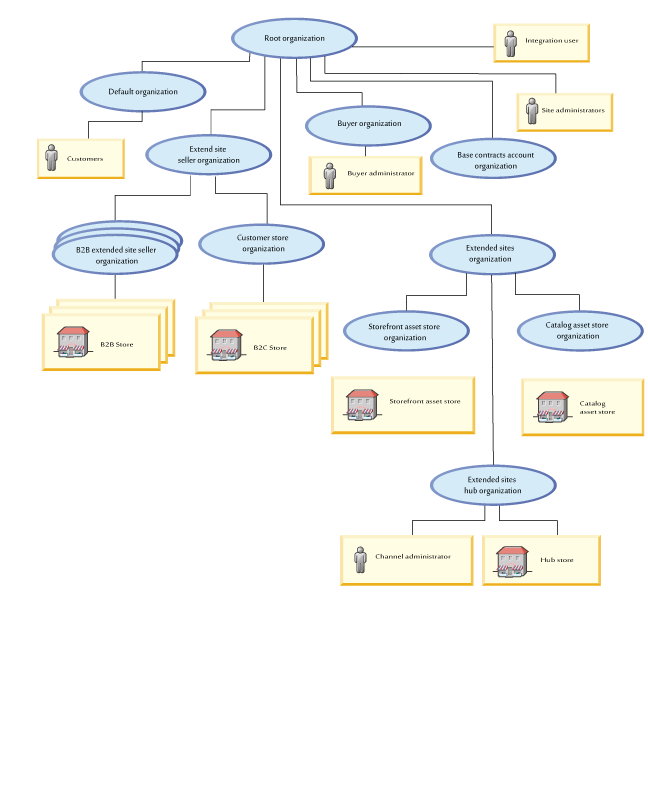
Extended sites organization structure
The extended sites organization structure consists of the root organization, default organization, extended sites organization, and extended sites seller organization.
The following diagram shows the extended sites organization structure and how each entity must be assigned to place an extended site online:

- Root organization
- All organizations in the business become descendants of the root organization. As well, the administrators who maintain the online site, the Site Administrators, are added directly under the root.
- Default organization
- All of the business' customers are owned by the Default organization
- Extended sites organization
- The extended sites organization is created to own all of the extended sites-related
organizations (with the exclusion of the organization that owns the stores). The extended sites
organization owns the following child organizational units:
- Extended sites hub organization
- The extended sites hub organization is created to own the extended sites hub. The administrators who maintain the extended sites hub's functions, and administering the extended sites organization, are termed channel administrators and are owned directly by the extended sites hub organization.
- Store directory organization
- The store directory organization is created to own the store directory.
- Asset store organization
- The asset store organization is created to own all assets that are used to create stores.
- Extended sites seller organization
- The extended sites seller organization is created to own all of the stores. A child organization
unit is created for each store.
- Store organization
- A new store organization is created under the parent extended sites organization for each store. The administrators who maintain the store's functions are termed hosted seller administrators and are owned directly by the corresponding store organization.